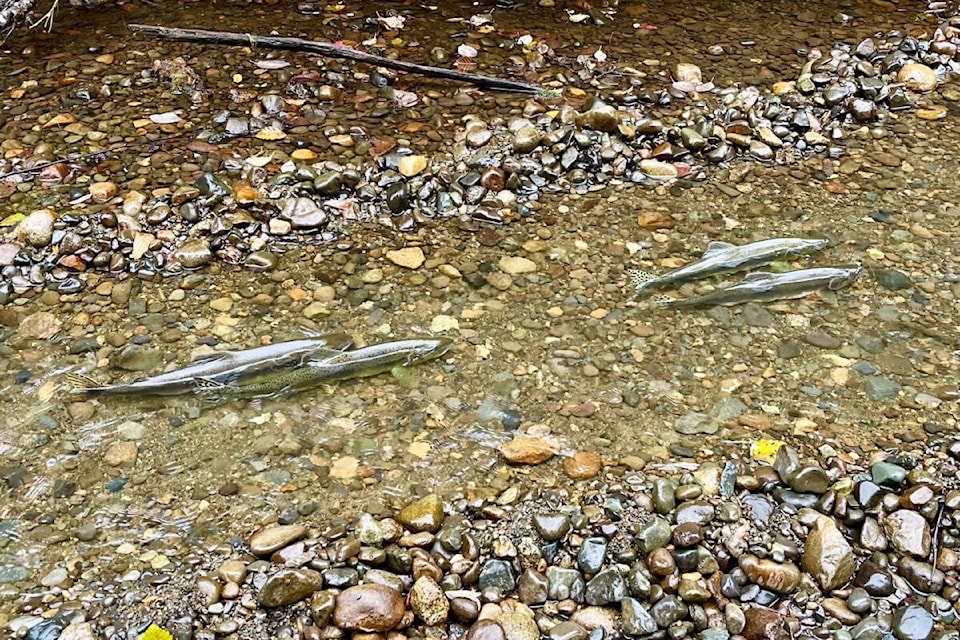Submitted by Laura O’Brien and Katie Gair
Special to the Record
According to the Tsolum River Restoration Society (TRRS), the Tsolum River hosted a record return of pink salmon last fallm despite unprecedented drought conditions in the watershed.
In mid-August 2023 the province declared the Tsolum at Level 5 drought classification (the highest level) and issued a ministerial order restricting water use. The order was lifted on Sept.27 after much-anticipated rainfall the previous week.
On odd years when the pink salmon return to their freshwater rearing ground, the TRRS’s volunteers take to the river where they walk the banks and gravel bars to count the returning salmon. On Sept. 30, volunteers covered roughly 15 km in one day, not including additional counts on main tributaries, Headquarters, Dove and Piercy Creeks. The summer drought, coupled with sudden rain, created difficult bank surveying conditions. A huge shout out to the many committed volunteers who braved the high water. Extrapolation of the collected data led to an estimate of roughly 300,000 pinks, which is very heartening as the Tsolum has faced many challenges over the years.
The 2021 pink migration included episodes of high mortality due to drought conditions. Severe heat and lack of precipitation caused the river to be too shallow for the returning salmon to navigate. When relief came in the form of a short period of rain and salmon moved upstream they quickly became stranded as water levels dropped again. This resulted in large numbers of pinks dying due to lack of oxygen in the pools. This negative condition plus high water temperatures are also deadly for salmon eggs so TRRS worried 2023 returns might be low, but the opposite was true.
A dozen years ago salmon returns like this were something the Tsolum River stewards could only imagine. For decades the river was devastated by toxic copper leachate from a mine site on Mt. Washington that had been abandoned in the mid-1960s. The pollution went undetected for many years and efforts to facilitate action took more time. In 2009/2010 a cover was installed on a portion of the site and since then the water quality has been improving and the river recovering.
The Tsolum fish still face many challenges including industrial forest, agriculture and urban development practices that impact spawning and rearing environments and fish health. The TRRS and many community members are in awe of the ability of the pink salmon to return in such numbers despite the obstacles the population faces.
Other species, such as coho, chinook and chum salmon, along with cutthroat, rainbow and steelhead trout, are struggling to recover at the rate the Tsolum’s pinks have been able to. There are plenty of things people can do to help these populations; be mindful of eggs (September to May) and juveniles (year-round but especially in summer) while walking in the river (including pets), avoid the release of chemicals from soaps, sunscreens, fuels, fertilizers and pesticides into the water, rescue stranded juvenile coho and trout from off-channel habitat in the spring, plant native trees and vegetation along the river/tributaries, remove invasive plants and bullfrogs, protect wetlands and ephemeral streams and ponds. Join the volunteers counting out-migrating juvenile salmonid from March to June, become part of the TRSS’s Eyes on the River monitoring program or take offered training and assist with our multi-year watershed health assessment. These are all great ways to help the salmon.
To learn more about how you can help the Tsolum River, visit tsolumriver.org or call 250 897-4670.
